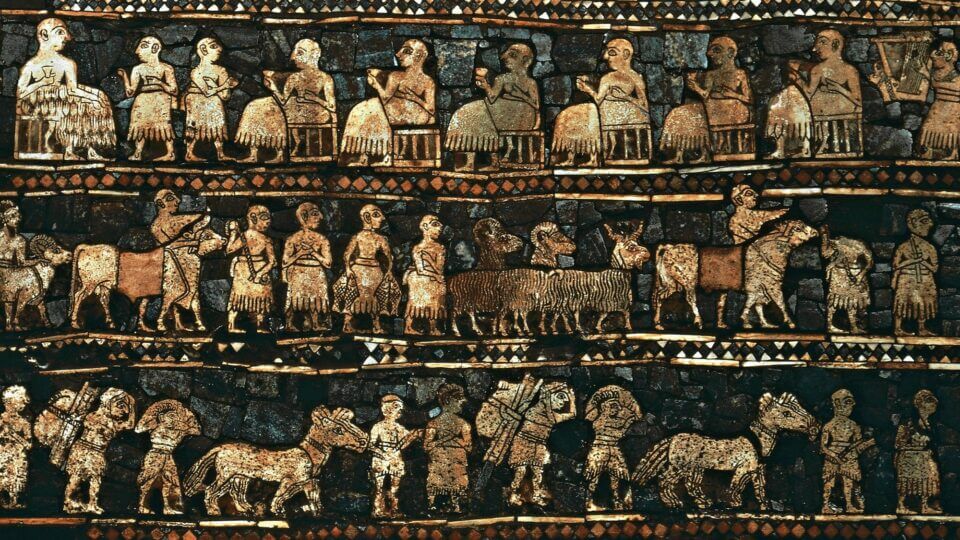
“In fact, many of the generals who participated in the 1936 rebellion used the 1934 rebellion as an excuse: if the Left was not willing to give recognition to a legitimately constituted government, then now the Right was not under the obligation to do so, either.”
The United States has had a number of recent controversies regarding the statues of Confederate generals. I have long thought that they must come down. But, it amazes me that, quite often, spurious arguments are made in favor of the toppling down of these statues. For example, it is often claimed that the South lost the war, so Southerners have no right to erect statues of Confederate generals. Never mind Confederates defending slavery; the important thing is that they lost the war. Had the Confederacy won the war, then Southerners can have all the statues they want. In other words, might makes right. I, for one, do not favor this kind of argument.
I am also troubled by the Manicheism that surrounds this debate. Social justice warriors repeat ad nauseam how racist the South was. It is hard to argue against that. But, they conveniently leave aside how racist the North also was, ignoring that, at least in the first stages of the war, the conflict was not about slavery per se. They also prefer to brush under the rug Lincoln’s somber aspects (the suspension of habeas corpus, his approval of Sherman’s brutal March to the Sea), as well as some of the objectionable tactics that Carpetbaggers engaged in during Reconstruction.
Be that as it may, I do not claim moral equivalence in the American Civil War. The Confederate monuments should indeed come down; but some historical revisionism is in order, and the narrative of the bad South vs. the good North needs to be challenged.
A similar debate has been now taking place in Spain. Recently, Fascist dictator Francisco Franco’s remains were exhumed from Valle de los caidos (Valley of the Fallen), a gigantic memorial built in his honor by the political prisoners of Franco’s regime. If we were to follow the might-is-right argument frequently used in the Confederacy monuments debate, then Franco’s remains should remain in Valle de los caidos. After all, he was the victor in the 1936-1939 Spanish Civil War. But, ethics is more than just about power. Ethics is about justice, and it is simply unjust to honor a brutal dictator who forced his enemies to build monuments in his honor.
The Left is unquestionably correct in arguing that Valle de los caidos is a celebration of war crimes and a brutal dictatorship. But, justice demands a balanced account of the facts. Unfortunately, this is not the current trend.
As in the American Civil War, I cannot claim moral equivalence in the Spanish Civil War. But, the Manichaeism with which the Spanish Left has approached this debate is not wise, either. Very much as in the Confederacy debate, some revisionism is in order.
In 1931, after 10 years of complicity with the dictatorship of General Primo de Rivera, Spanish king Alfonso XIII realized that, after some municipal elections, he would have no support; he wisely resigned. Monarchies may be criticized on many accounts, but at least here, some praise should go to King Alfonso who, unlike many others, was not corrupted by power and stepped down in order to avoid the shedding of blood. The Spanish Left unjustly pays no due to the king in this regard.
Once the king was gone, a Republic was established. Spain had not fully embraced modernity (the 19th Century had seen many conflicts between modernizers and traditionalists), and, consequently, not everyone was happy with the way things were happening. The Republican government produced a very liberal Constitution. It was praiseworthy in many aspects, but, in some other aspects, it went too far and became quite illiberal. The 1931 Constitution separated Church and State and removed subsidies to Catholic religious orders. By any liberal standard, this is a good thing. But, the Constitution also stipulated that the State had the right to arbitrarily confiscate Church property—and could watch over religious orders if it considered them a threat to State security. By doing this, the Spanish Republic abandoned its liberal secular approach and embraced much more closely the Soviet-style atheist, totalitarian approach.
Naturally, in a country that was once considered martillo de los herejes (hammer against heretics), many Catholics were enraged. But, instead of being sensitive about this issue, the Republic allowed thugs and militias to burn and loot churches and convents. The secular Republic refused to defeat religion by engaging with clerics in debate and preferred to defeat them by simply burning down temples.
In that chaotic environment, some power-hungry opportunists seized the opportunity. General José Sanjurjo attempted a coup d’état in 1932—but to no effect. It was almost a bloodless attempt, with very little support. At the time, the ruling left-wing government tried an agrarian reform that was much needed in a society that remained deeply feudal in many aspects. Some important steps were taken in that direction, but once again, there were discontents. This time, anarchists rose in rebellion, as they demanded a more radical approach to land redistribution. The leftist coalition that was in power began to break down, and, as a result, in the 1933 elections, CEDA (Confederacion Espanola de Derechas Autonomas; Spanish Confederacy of Autonomous Right-Wing Parties), a conservative coalition, took power.
This was a very heterogenous coalition. Its leader, Gil-Robles, had some authoritarian tendencies, and he enjoyed the support of the clergy and most traditionalist sectors. Eventually, it became too easy for the Left to claim that Gil-Robles and CEDA were part of the fascist trend that was already taking over Italy and Germany in the 1930’s. The Spanish Left was terrified by what Hitler and Mussolini were doing, and they feared that Spain might be the next piece to fall in that domino set.
The ruling right-wing coalition reversed some of the reforms put forth by the previous administration. Gil-Robles and his followers also began to speak with seemingly more fascist and anti-republican language, and the Falange (a prominent paramilitary group with unapologetically fascist views) became more visible. But it is grossly unfair to accuse Gil-Robles and his coalition of being fascists of the same caliber as Mussolini. They were conservatives but not fascists. Fascism entered the scene in Spain long after Gil-Robles. CEDA reached power via democratic means, and even if its policies were unpopular in many sectors, it still constituted a legitimate government.
But, the Spanish Left was afraid that CEDA, once in power, would destroy democracy. So, leftist groups prepared a grand rebellion in 1934. In fact, this rebellion was ill-organized and was easily suppressed. The only exception was in the region of Asturias. There, armed miners stood their ground for weeks, and, ultimately, the government cracked them down.
The government’s repression was not proportional. As a result, CEDA lost whatever popularity it had left, and in 1936, they were defeated in the elections. In the contemporary historical debate, the Left conveniently leaves out that the 1934 events were a crucial aspect of the 1936 rebellion initiated by Franco and his cronies. CEDA was not the fascist threat that Gil-Robles’ adversaries imagined, and there was no justification to attempt to topple a legitimately constituted government. By encouraging the 1934 rebellion, the Spanish Left rejected the fundamental democratic principle of alternance and signaled that leftists would not tolerate a conservative government. In fact, many of the generals who participated in the 1936 rebellion used the 1934 rebellion as an excuse: if the Left was not willing to give recognition to a legitimately constituted government, then now the Right was not under the obligation to do so, either.
In the 1936 elections, the leftist coalition under Frente Popular (Popular Front) reached power, but the situation once again became critical. This coalition was no longer made up of liberal politicians, as in the Republic’s first years. More radicalized Communists now occupied important government positions, and very much as the fascists, who were beginning to appear in the scene, these communists were also suspicious of a republican model. In their view, a Republic was actually the same as a bourgeois democracy that disregarded the real interests of the proletariat; the only real solution was a social revolution. One particular politician, Largo Caballero (the so-called “Spanish Lenin”) radicalized this message, and, as his prominence grew, the Right lost trust in the Republic. This facilitated the rise of right-wing militias.
The new leftist government was weak from the beginning. A gang of fascists killed José Castillo, a military officer who sympathized with the Left. As retribution, a leftist gang killed José Calvo Sotelo, the emerging leader of the Right. Strictly speaking, this was not the spark that ignited the war; some generals had already planned in advance a rebellion. But the murder of Calvo Sotelo was a significant event in the launching of the rebellion. Franco, who until that time had remained uninterested in the rebellion, joined only after hearing about Calvo Sotelo’s murder.
Once the war began, there were atrocities on both sides. It was not a war of combats and military engagements; for the most part, it was a war of executions and crimes. The rebels committed terrible crimes in Badajoz; the loyalists did the same in Paracuellos. There was also significant participation of outside powers. Hitler and Mussolini offered support to Franco (most infamously, in the Guernica bombings, so vividly portrayed by Picasso). Predictably, much is made of this alliance in the modern retellings of the war. But, very often, leftists conveniently neglect to mention that Stalin offered logistical and arms support to the loyalists and, in the process, very aggressively depredated the Spanish national treasury.
Ultimately, the fascists won. There was no amnesty for the losers, and, in the years following the war, Franco fiercely persecuted his adversaries. The Left is unquestionably correct in arguing that Valle de los caidos is a celebration of war crimes and a brutal dictatorship. But, justice demands a balanced account of the facts. Unfortunately, this is not the current trend. The Left is getting a free pass in retellings of the Civil War. Admittedly, Franco’s forces engaged in more atrocities than the Republicans, but—for the sake of real reconciliation and historical fairness—Spaniards need to come to terms with all atrocities and misdeeds, not just those of the now-unpopular fascists. Likewise, there is no moral justification for the 1936 rebellion, but historians also need to condemn the 1934 rebellion and accept that it was a Pandora Box that, once opened, led the way to one of the darkest chapters in Spanish history.
Dr. Gabriel Andrade teaches ethics and behavioral science at Ajman University, United Arab Emirates. He has previously contributed to Areo Magazine and DePauw University’s The Prindle Post.










